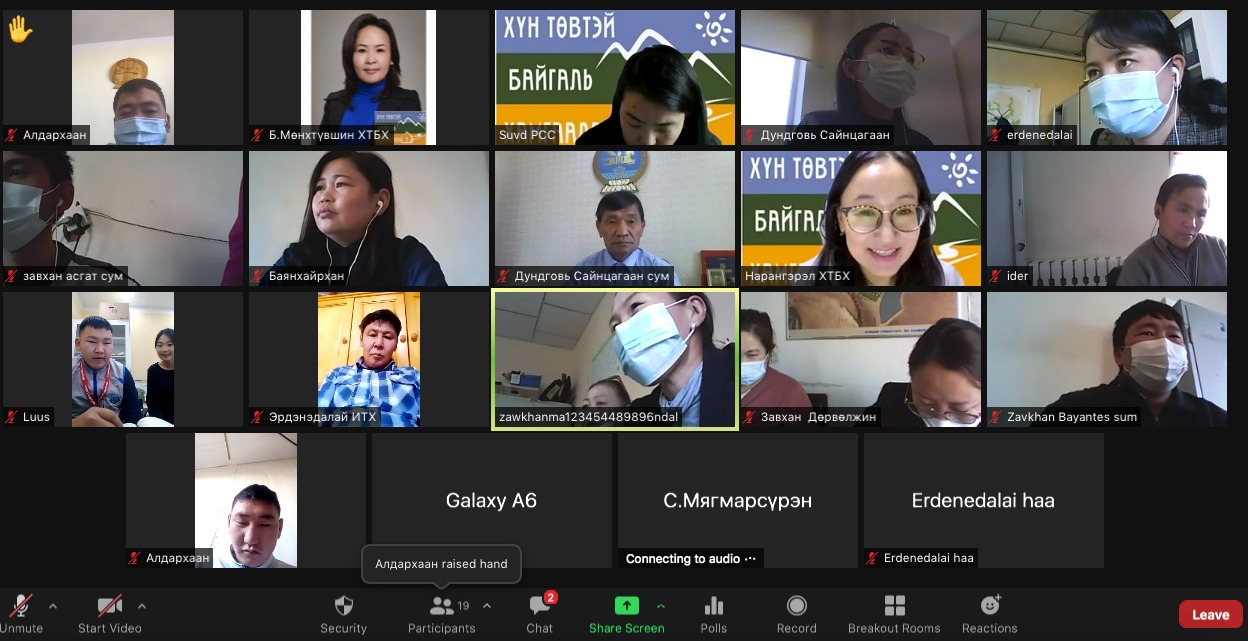“It will be fun to develop land-use planning, if we do it together.” This was a comment from one of the local land managers during 30 online workshops run by PCC to introduce new Gender Guidelines for local land management in Mongolia.
The workshops, held in November and December 2021, involved almost 700 local land officers, soum citizen parliament leaders, and bagh governors from 330 soums of 21 provinces. Our job was to encourage public consultation and inclusive, gender-equitable participation in local land governance processes, and help to strengthen the national guidance for local land planning and management, developed by the National Land Agency (ALAMGAC).
In simple terms, we were sharing the results of over five years of practical research on how to develop local land use planning with local herder families as guardians of the grasslands of the nation. Our work is a collaboration with WOLTS, a global project which promotes gender-equitable, inclusive and participatory land governance, to support more secure land rights for vulnerable people.
These new guidelines for Mongolia are the result of WOLTS and PCC research in Dalanjargalan, Bornuur and Tsenkher soums, where local communities openly and enthusiastically shared their knowledge and experience with us. In other words, they are the ones who inspired and contributed most to developing the tools and processes that are now being introduced and used by land officers at the national level.
Before organizing the 30 online workshops, the PCC team worked hard to try to make them as interesting and engaging as possible. We used quizzes and interactive exercises to get the participants involved. One of the most popular activities was a natural resource mapping exercise.
The mapping exercise starts with community members listing all the natural resources they have in their area and drawing their locations on a flip chart. They draw in mountains, rivers and roads. While everyone is drawing, they talk about who uses these resources and whether their condition has changed in the past 5-10 years. The discussion then moves to what can be done to address issues like land degradation and equitable access for vulnerable people, and how this can be included in the local plan. A similar process is used for social mapping, where participants talk about matters such as livelihoods, health, education and local governance structures.
The participants also enjoyed mapping herder migrations, which helped to identify problems and solutions. During this exercise, men and women herders were asked to draw their migration routes on a flip chart including distance, how many times they move their animals, what problems they face, and where they go. By asking questions about grassland use, movement patterns and disputes, the facilitator can often help herders to understand the cause of disputes and what special support might be needed for vulnerable groups such as elderly widows, which can again be included in the local pastureland management plan.
We were very pleased that 60% of participants in the workshops agreed that the Gender Guidelines will help them to develop more inclusive, gender-sensitive and participatory land planning in their areas. Most interestingly, the workshop attendees said that these new guidelines would also be used to develop other local plans related to social and environmental issues in the soum.
Since the workshops were held, we have received encouraging emails and phone calls from the participants, who are starting to apply the Gender Guidelines in land governance processes at local level. One land officer said they had already tried using the mapping exercises with local herders and received positive feedback. It was very effective he told us. “I think it will be fun to do land-use planning with locals, if we use these guidelines.”
Narangerel Yansanjav is Executive Director of the Mongolian NGO, People Centered Conservation (PCC), and a senior team member of the global WOLTS project.
This article has been simultaneously published as a Mokoro newsletter article with permission of the author.


